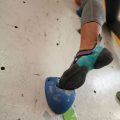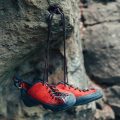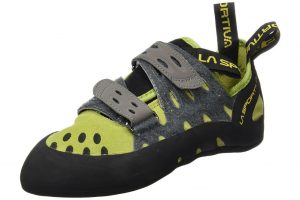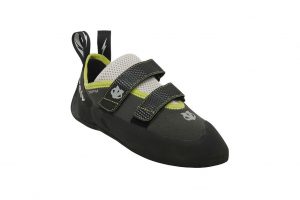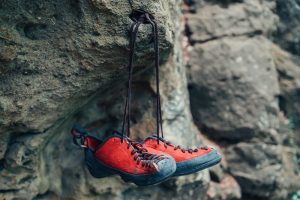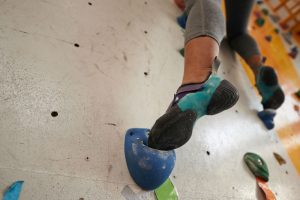Climbing shoes are a great choice for not only hardcore activities like trekking, climbing, mountaineering, and others, but also for daily wear, and normal regular jogging and running activities.
To get the perfect fit, when it comes to climbing shoes, though is a relatively harder job. It has been seen that customers regularly face a problem as to what size of shoes would fit them best.
Most problems arise due to two major issues:
- Some people have larger toes
- Others have longer ones
Since climbing shoes need to be closely fit with the rubber and Velcro to provide maximum grip and protection, customers are usually advised to try 2 or 3 sizes together, to see which fits them best and which provides the highest level of comfort.
To choose the best out of the climbing shoes that you may get, you need to know some of their basic types.
Aggressive
These climbing shoes are meant for hardcore climbing activities such as mountaineering and the others. They have a very firm grip and are closely fitted so that no space is left between the toes and the sole, and the heels and the soles either. They usually allow your toes to be free and clenched too hard, so as to allow free movement during climbing.
The soles of these shoes are made with industrial quality Velcro and rubber, and the material is more often than not a blend of natural and mostly synthetic fibers.
Semi-aggressive
For a change, these climbing shoes can also be used for other sporting activities such as jogging, running, and cycling. They make for great gym wear and provide all-round protection and comfort to your feet all day long.
The rubber in these shoe soles is stickier to provide a comfortable grip with which the athlete can work better. These shoes also tend to be more comfortable than the aggressive ones, and also are easier to deal with.
You can go on climbing hard trails for a longer period of time with these shoes, practically anywhere, anytime.
Neutral
As the name suggests, these have the highest level of comfort. They are thinly soled with good quality rubber and most frequently used for daily wear or regular sportswear. You could wear them practically anywhere. The best part about neutral climbing shoes is that they serve the dual purpose of being ultra-comfortable, as well as extra effective when it comes to athletic or sporty activities.
Another important matter that comes into consideration while finding the perfect shoe size when it comes to climbing shoes is that you need to check out the material of the shoes and the quality of their soles.
Quality of soles
The soles are usually made of rubber. Sometimes this is industry grade hard resistant rubber, while other times the rubber soles could be stickier in nature. Now though the stickier quality rubber is more comfortable for your feet, it tends to wear away sooner, and this makes the shoes less resistant and hardy. Again, shoes with hard rubber soles and toe guards can hurt your feet after time, which do not make them the best choice either.
Material of the shoes
Climbing shoes are very flexible in nature and made in a way that the shoes fit closely to your feet. The basic logic behind this is that climbing shoes need to be closely fitted and feel comfortable to the wearer in order to ensure a safe and enjoyable climb.
Now such shoes are usually made out of a blend of natural and synthetic fibers. The harder the shoe soles and better the shoe quality, the greater the percentage of synthetic fiber in it. Natural fibers are not as resistant as synthetic ones, and thus, it would be wiser to choose a pair of climbing shoes that are synthetic fiber based.
To get your perfect size, experts believe that you should try out different sizes and judge the shoes not only according to their fit but also their comfort levels. You should not be worrying about your feet, while you are on a long multi-pitch trail or amidst any other important activity. If required, ask the assistants at the shops to help you out.



